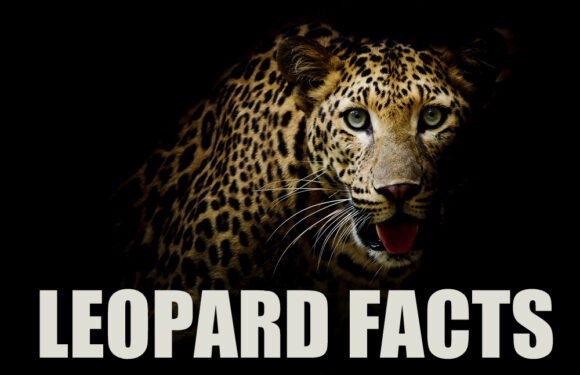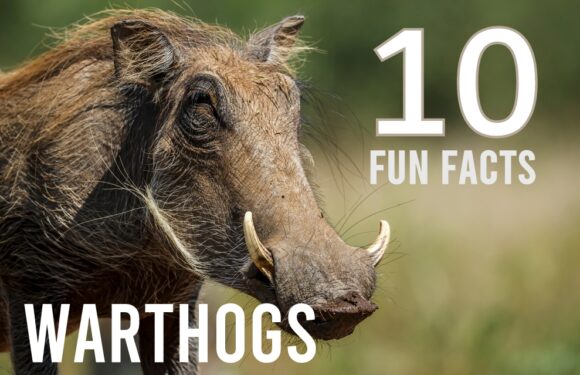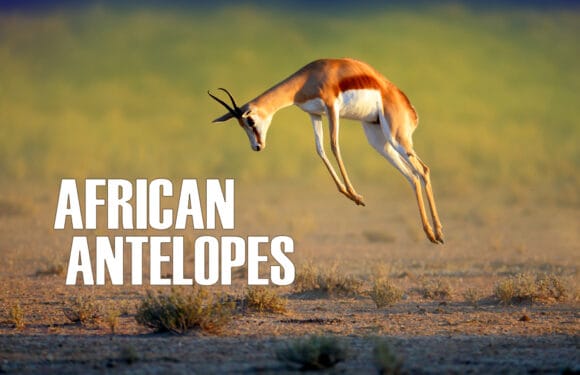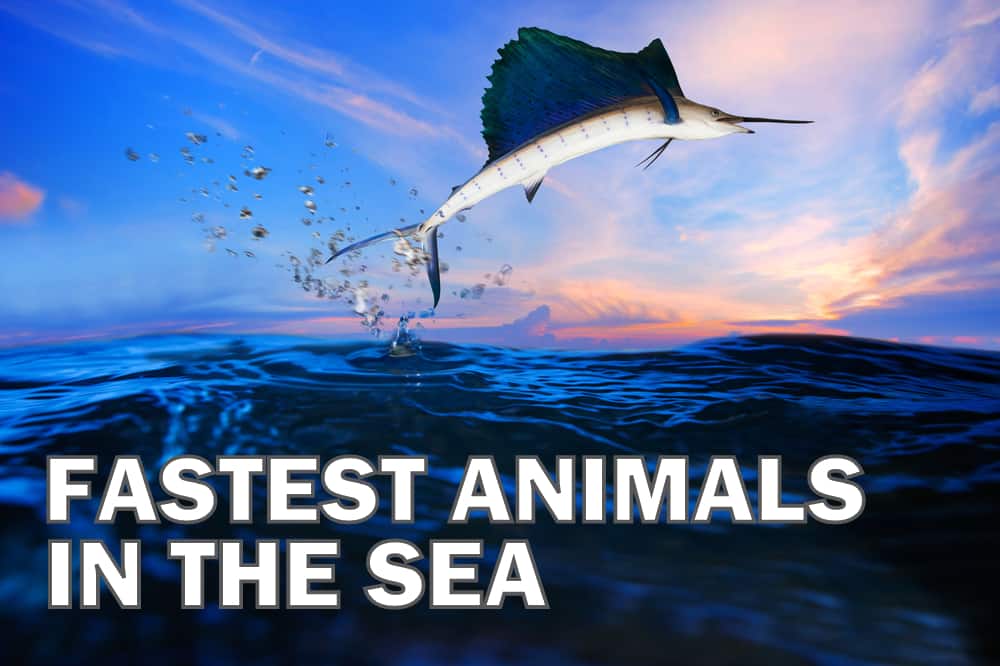
In the dangerous ocean, a marine animal’s speed can determine whether it lives or dies. Being fast is important in pursuits as a predator and in escapes as prey. This article examines the world’s fastest animals in the ocean.
How Fast Can Humans Swim?
When compared to sea creatures, humans are relatively slow swimmers. The average person swims at about 2 miles per hour (3.2 kilometers per hour). Olympic swimmers can reach speeds of up to 5 miles per hour (8 kilometers per hour). While impressive to us, this pace that pales in comparison to the astonishing speeds achieved by the fastest animals in the ocean.

Why Are Marine Animals So Fast?
Marine animals outpace humans significantly due to evolutionary adaptations that have designed their bodies for life in water. These adaptations include streamlined bodies, powerful tails, and fins. In contrast, humans, primarily adapted for life on land, lack specialized characteristics, resulting in significantly slower speeds in the water.
The shapes of many fast-swimming fish and sea mammals are hydrodynamic, designed to reduce drag. For example, the bodies of dolphins and sharks are tapered in the front and rear. This allows for efficient movement through the water at higher speeds compared to the relatively blunt and upright posture of humans, which increases drag and reduces speed.
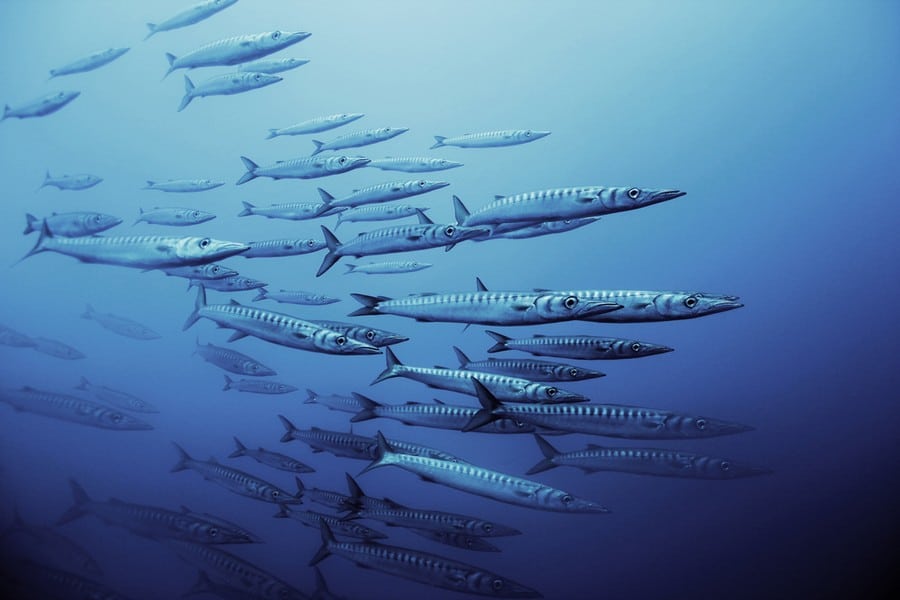
The muscle composition of marine animals is another factor. Fast-swimming species have a higher proportion of fast-twitch muscle fibers. These muscles, which contract quickly and provide the burst of speed, paired with tails that are highly efficient propellers, enable rapid acceleration and swift movements. Human muscles are a mix of fast and slow-twitch fibers, optimized for endurance and versatility rather than speed. Additionally, human limbs are not well suited for propulsion in water.
Finally, sea animals have methods to control their buoyancy. Fish regulate their buoyancy with swim bladders, allowing them to maintain or change depths without expending much energy. Marine mammals have blubber for buoyancy and insulation. Humans, lacking these adaptations, must rely on artificial means, like flippers or buoyancy control devices, to move faster and stay afloat in water.
The Top 15 Fastest Marine Animals
1. Black Marlin – Top Speed: 82 mph (132 kph)
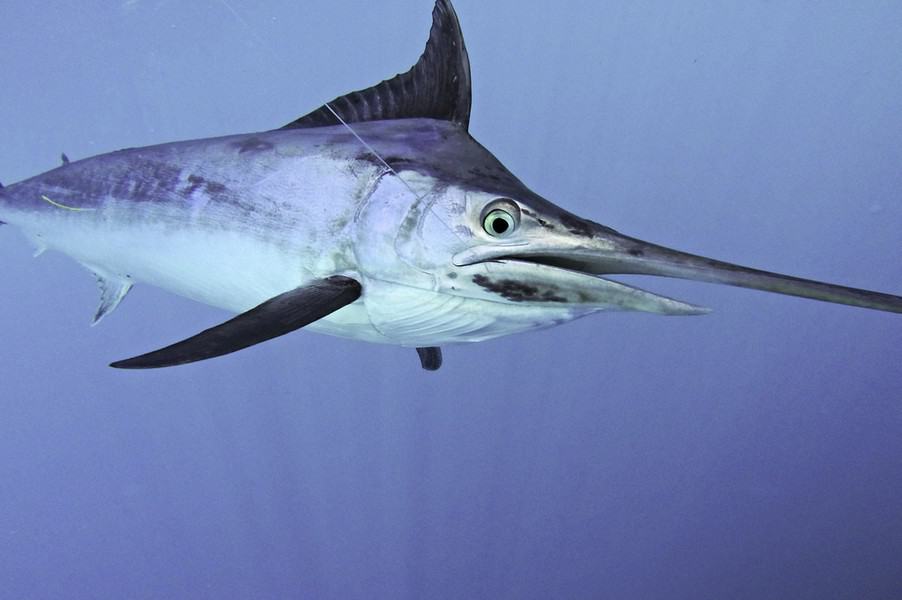
The black marlin is the fastest sea animal by far. With a streamlined physique and a rigid pectoral fin to cut through water, it showcases evolutionary perfection for speed. This apex predator capitalizes on its velocity to overtake even the swiftest prey, such as tuna and flying fish. Its bill is used as a weapon for hunting, to slash through schools of fish in an attempt to stun or injure prey before circling back to eat them. This method allows the marlin to target multiple potential prey in a single pass, increasing its chances of a successful hunt.
2. Sailfish – Top Speed: 68 mph (110 kph)
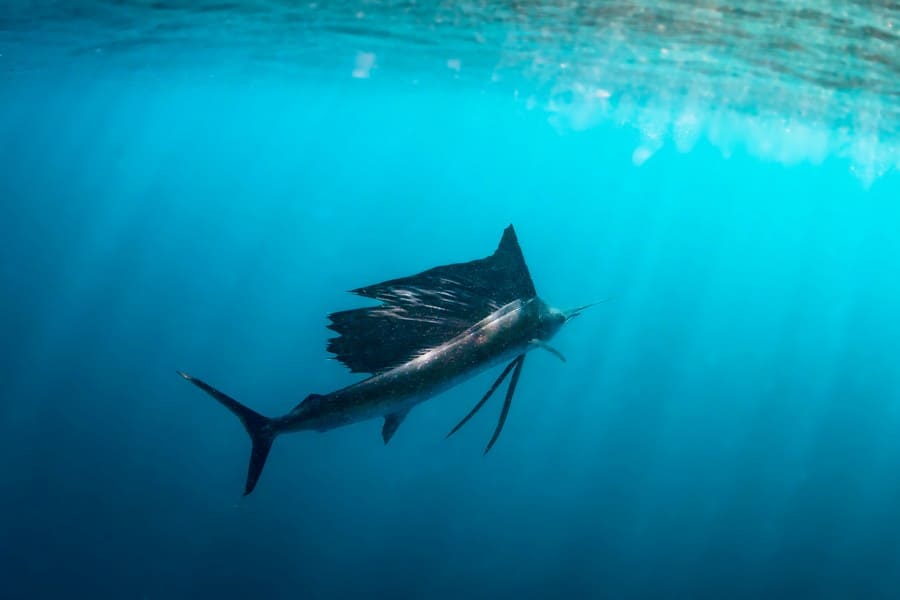
The sailfish, easily recognized by its large sail-like dorsal fin, exhibits extraordinary speed. This fin, often larger than the body itself, can be retracted to enhance hydrodynamic efficiency. Sailfish are hunters that excel in pack hunting, coordinating with precision to herd schools of fish. Their speed is complemented by their agility, enabling sharp turns in pursuit of prey. The sailfish’s vibrant coloration, which can change rapidly, is used for communication during these hunts.
3. Swordfish – Top Speed: 60 mph (97 kph)
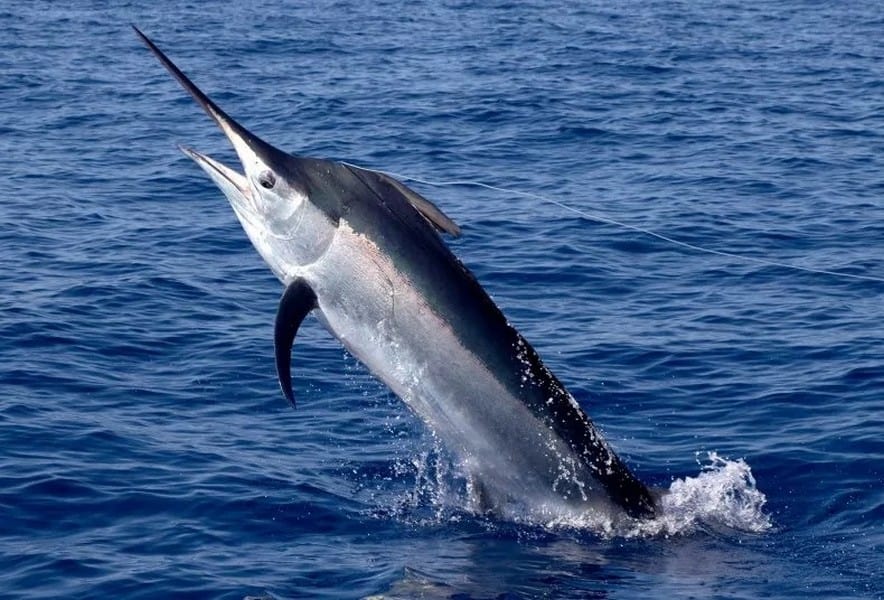
Swordfish are armed with a sword-like bill that serves as both weapon and hydrodynamic aid. Their large eyes are adapted to the depths they hunt in, allowing them to spot prey in low light conditions. Swordfish can endure cold waters thanks to a special organ that warms their brain, enhancing their reaction times. These solitary predators prefer the open ocean, where their speed gives them an edge over both prey and potential threats. The swordfish’s muscular gives it the ability to undertake long migrations across oceans.
4. Wahoo – Top Speed: 60 mph (97 kph)
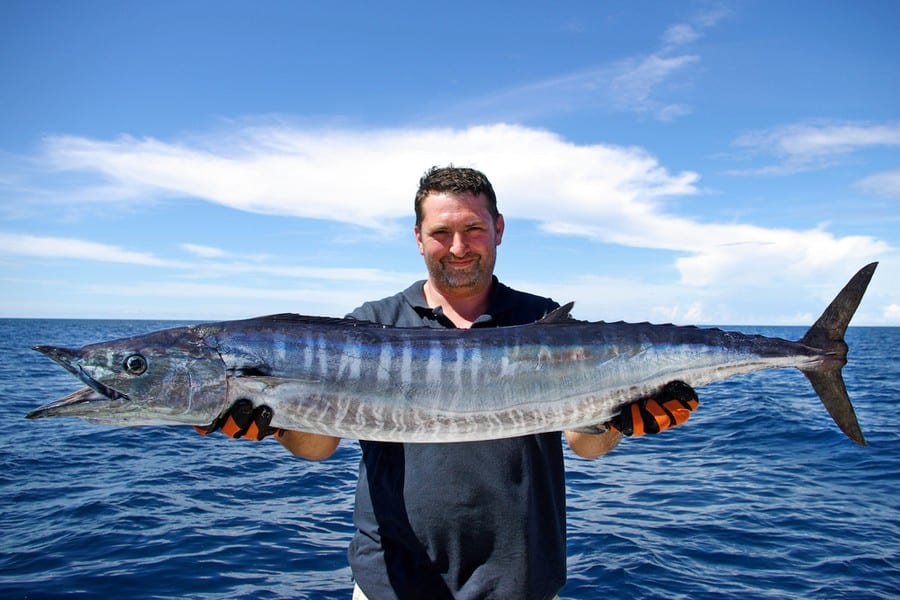
The wahoo is a highly prized game fish, known for its blazing speed and the challenge it presents to anglers. This pelagic species is found in tropical and subtropical seas worldwide, recognizable by its elongated body, striking blue and silver coloration, and series of vertical bars running along its sides. Wahoo are solitary creatures, preferring to hunt alone in the open waters. Its sharp, serrated teeth enable it to grasp and slice through its prey with ease.
5. Dorado (Mahi-Mahi) – Top Speed: 50 mph (80 kph)
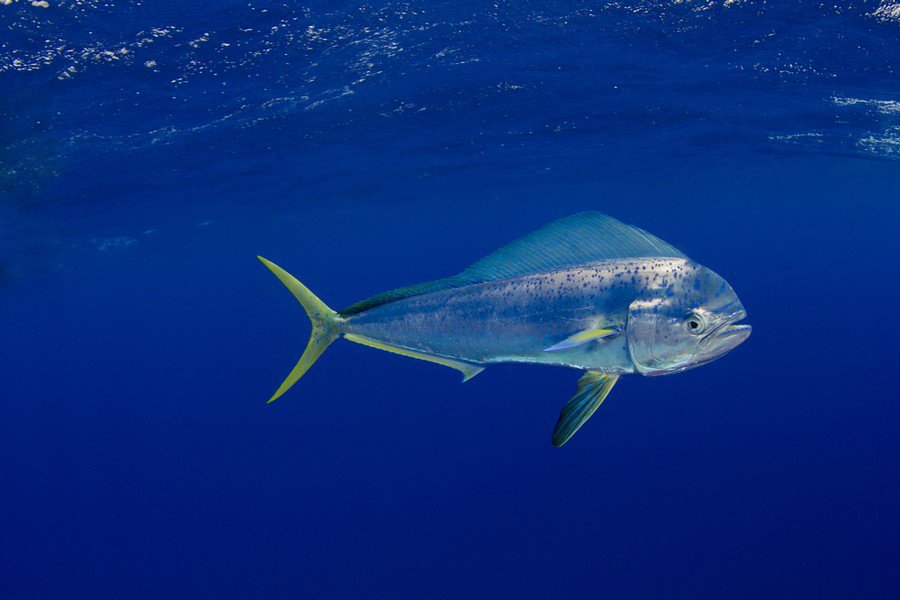
The dorado, commonly known as mahi-mahi, is renowned for its dazzling colors. Its body can change dramatically when the fish is excited or out of water, displaying brilliant hues of blue, green, and yellow. This fast-growing species inhabits warm oceanic waters and is identifiable by its compressed body and a single long dorsal fin extending from head to tail. Mahi-mahi are known for their acrobatic displays when hooked, including high jumps and fast runs, making them a favourite among sport fishermen.
6. Yellowfin Tuna – Top Speed: 47 mph (76 kph)
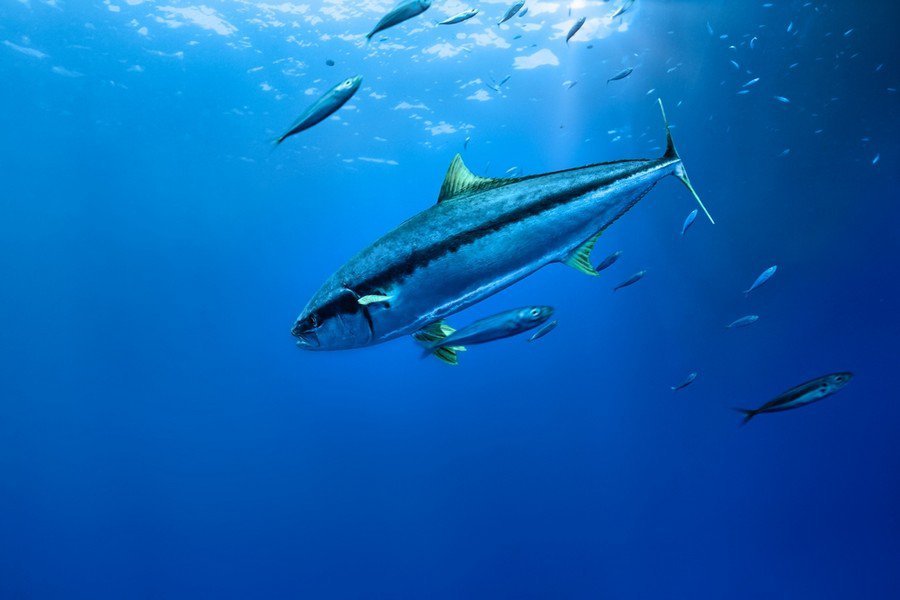
Yellowfin tuna are among the ocean’s most efficient long-distance swimmers, using their speed to cover vast stretches of ocean in search of food. Their streamlined bodies are supported by a series of finlets on the dorsal and ventral sides, reducing water resistance. These fish form large schools, which can move together at high speeds. This behavior helps protect them from predators. Yellowfin tuna are highly sought after by commercial fisheries for their valuable meat, leading to concerns over sustainable fishing practices.
7. Mako Shark – Top Speed: 45 mph (72 kph)
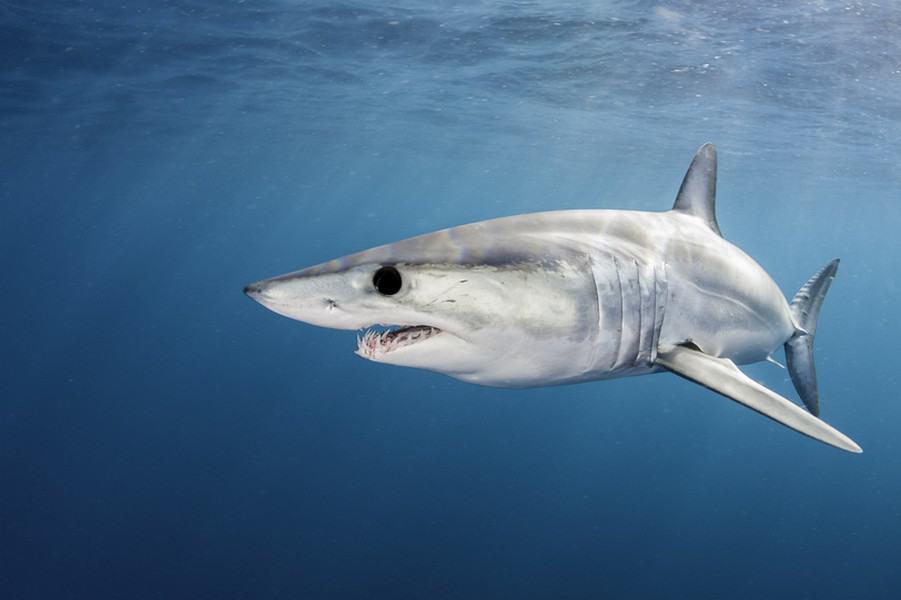
The mako shark’s build is a tribute to nature’s hydrodynamic design. Its sleek body and caudal fin are perfectly shaped for bursts of speed. Known for their aggression and power, mako sharks are apex predators, feeding on a diet of cephalopods and bony fish. Their endothermic system allows them to maintain a body temperature higher than the surrounding water, which gives them the energy needed for quick acceleration. Mako sharks are also among the most acrobatic of sharks, capable of leaping high above the water’s surface.
8. Atlantic Bluefin Tuna – Top Speed: 43 mph (69 kph)
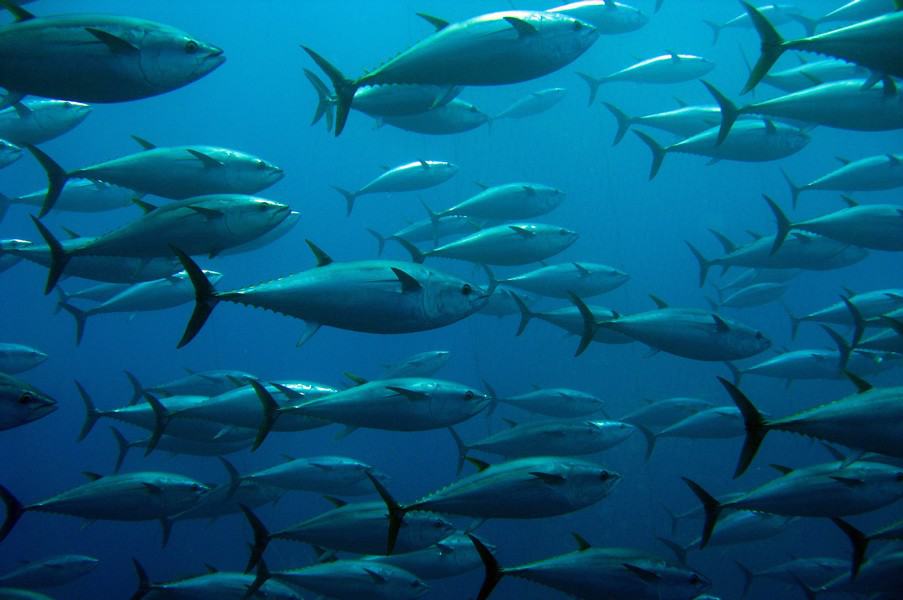
The Atlantic bluefin tuna is one of the largest and fastest fish in the ocean. Capable of reaching lengths of nearly 10 feet (3 meters) and weights of over 1,500 pounts (680 kilograms), these giants are built for endurance and speed. Bluefin tuna are highly migratory, travelling vast distances across the oceans in search of food, which includes fish, squid, and crustaceans. These fish are warm-blooded, a rare trait among fish, allowing them to inhabit a wide range of water temperatures.
9. Blue Shark – Top Speed: 43 mph (69 kph)
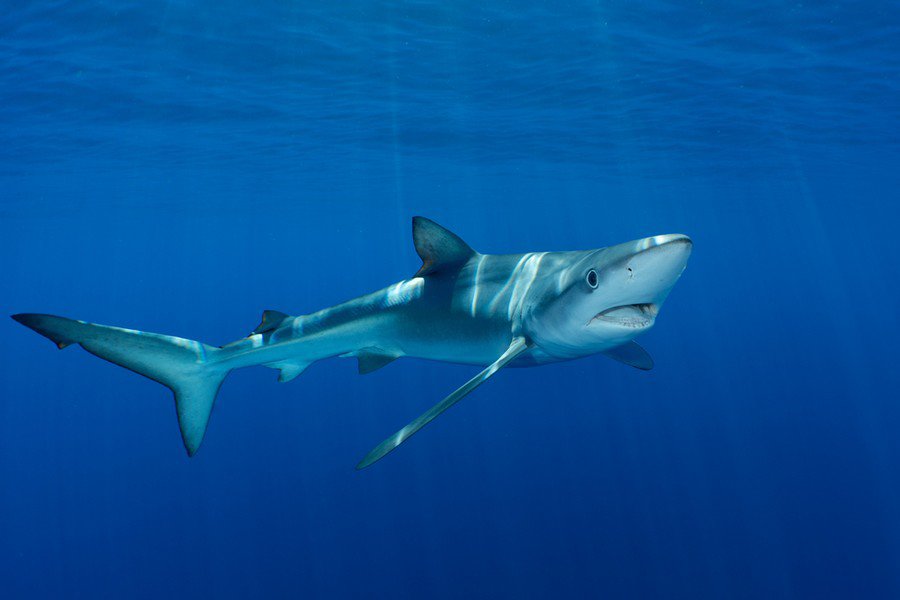
The blue shark is characterized by its sleek, elongated body, slender pectoral fins, and deep blue color. They have a varied diet, but mainly feed on small fish and squid, using their speed to ambush prey. It is also known for its curious nature, often approaching boats and divers. Unfortunately, blue sharks face threats from human activities, including commercial fishing, where they are often caught as bycatch.
10. Bonefish – Top Speed: 40 mph (64 kph)
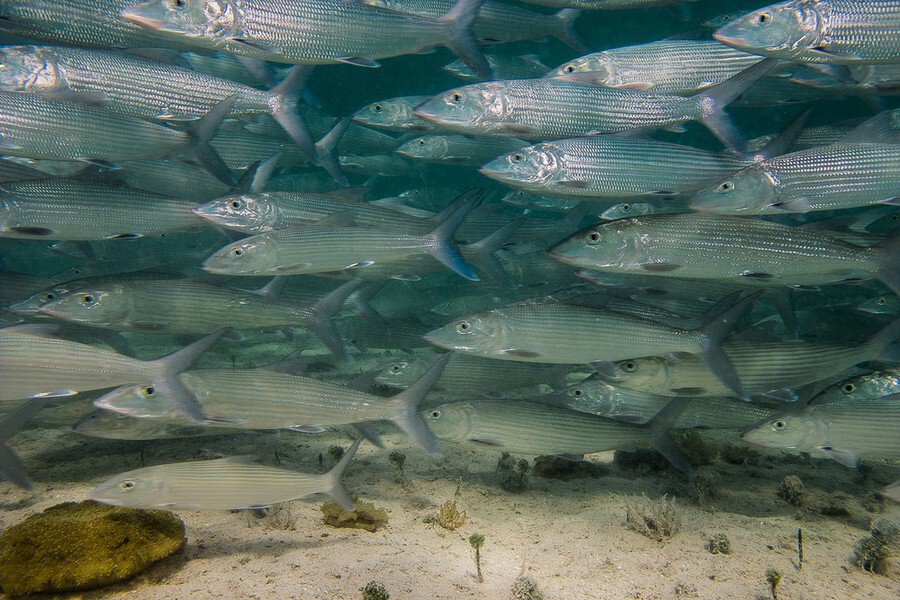
Often called “the ghost of the flats,” bonefish are the sprinters of shallow waters. They can make lightning-fast runs when hooked. Their slender, silver bodies are designed to navigate the flats and mangroves they inhabit. Bonefish primarily feed on crustaceans, small fish, and molluscs, using their pointed snouts to dig prey out of the sand. Habitat preservation, especially of mangroves and seagrass beds, is crucial for maintaining healthy bonefish populations.
11. Bottlenose Dolphin – Top Speed: 37 mph (60 kph)
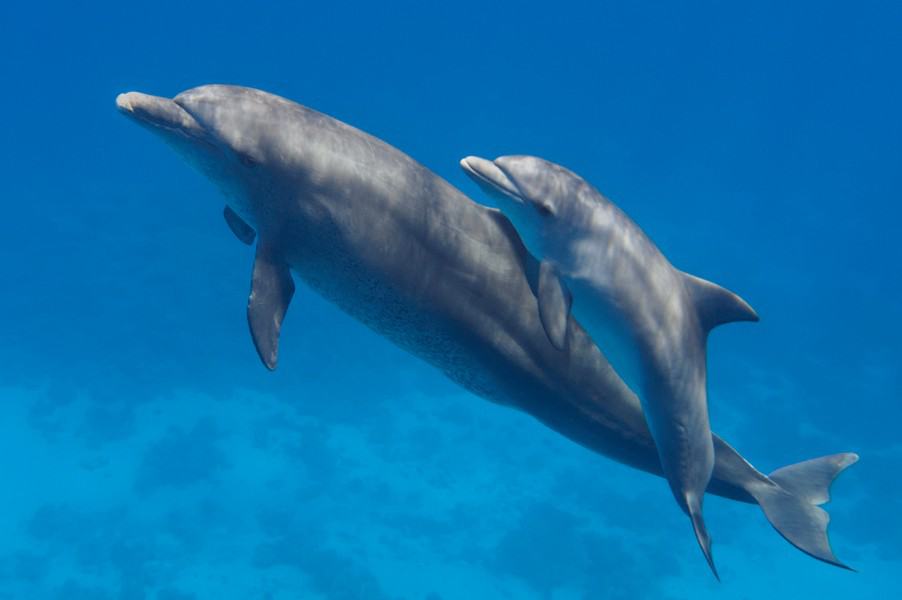
The bottlenose dolphin is one of the most recognizable and widely studied marine mammals. They are not only one of the smartest animals in the world, but also one of the fastest animals in the ocean. Bottlenose dolphins are found in warm and temperate seas worldwide. They possess a robust body, a distinctive grey color, and a ‘bottlenose’ that gives them their name. They use echolocation to navigate and hunt in the murky depths, relying on speed and agility to catch their prey. Dolphins have a playful nature, often seen interacting with humans and riding the bow wave of ships. Their muscular body and powerful tail fluke propel them through water with grace and efficiency.
12. Great Barracuda – Top Speed: 36 mph (58 kph)
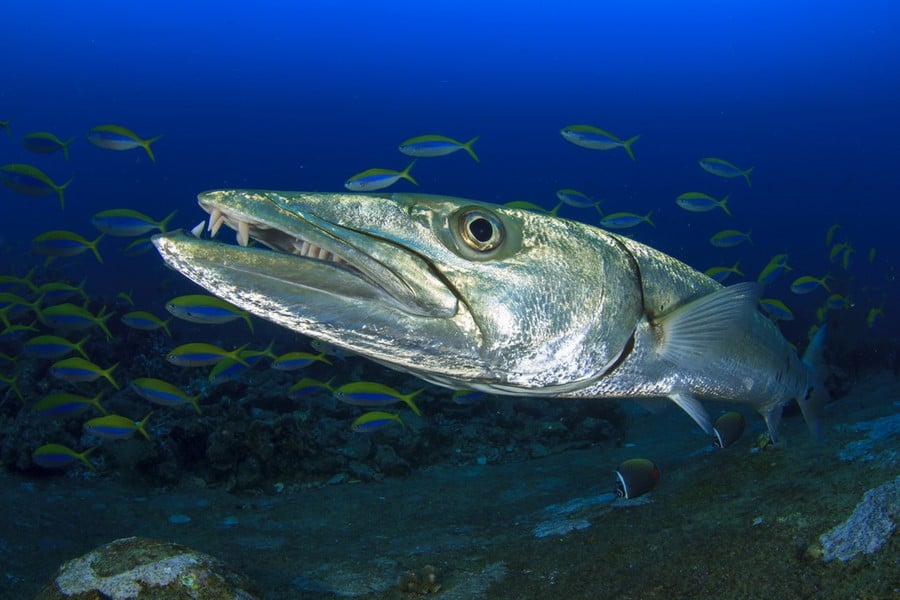
The great barracuda is a menacing predator with explosive speed. Its long body, large mouth, and sharp, prominent teeth are designed for capturing fast-moving prey. Barracudas are primarily found in the world’s warmer oceans, often lurking in coral reefs and seagrass beds, where they ambush fish, octopuses, and crustaceans. Despite their fearsome reputation, barracuda attacks on humans are rare. In most cases, the fish might mistake shiny objects, such as jewellery or metal fittings on dive gear, for fish, which triggers a predatory response.
13. Tarpon – Top Speed: 35 mph (56kph)
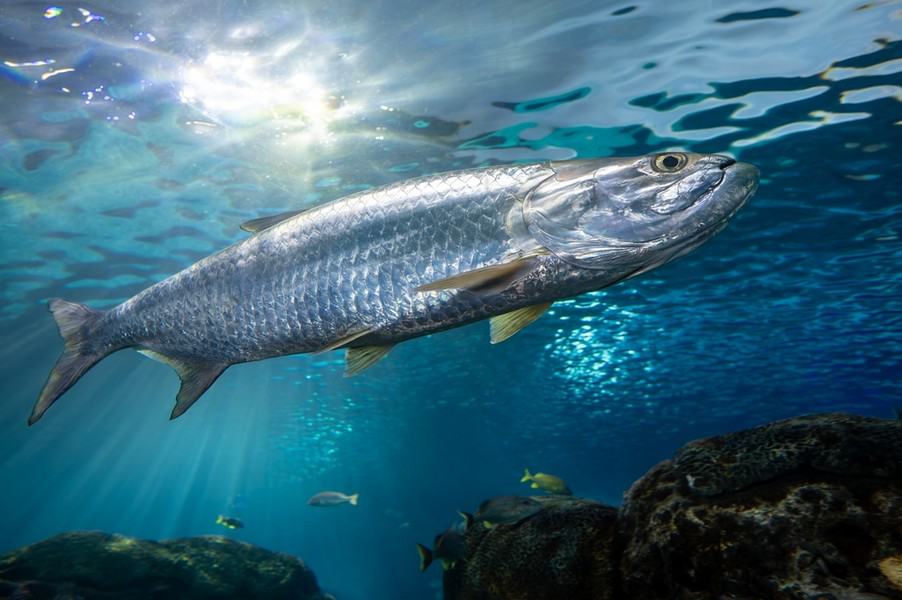
The tarpon is an extraordinary species, celebrated for its size and athleticism. This ancient fish, often referred to as the “silver king,” has shiny, silvery scale armor. Tarpons can grow to over 8 feet (2.4 meters) in length and weigh up to 280 pounds (127 kilograms), with a lifespan that can extend beyond 50 years. They inhabit coastal waters, estuaries, and rivers and are found in the Atlantic Ocean, from North America to Brazil, and in parts of the Pacific. Their unique swim bladder functions as a lung, which allows them to survive in oxygen-poor environments and live in both saltwater and freshwater.
14.Flying Fish – Top Speed: 35 mph (56 kph) when gliding
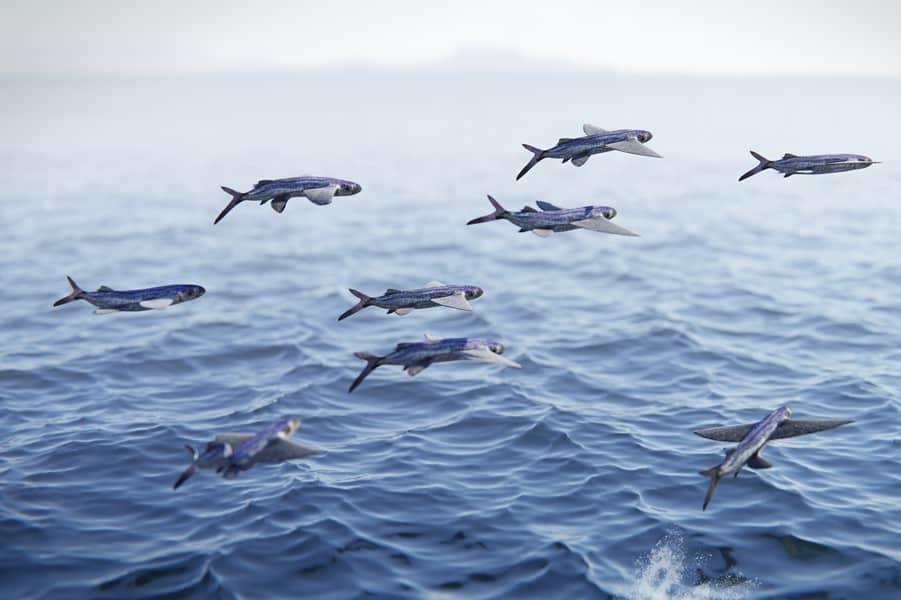
Flying fish are a great example of nature’s ingenuity. The fish have evolved the ability to glide in the air to escape predators! Found in all of the world’s oceans, particularly in warm tropical and subtropical waters, these fish have specialized pectoral fins that act like wings. When threatened, they leap into the air and extend their fins to glide up to 656 feet (200 meters). Their diet primarily consists of plankton, and they themselves are prey for larger marine animals, including tuna and marlin, and even seabirds.
15.Orca – Top Speed: 34 mph (55 kph)
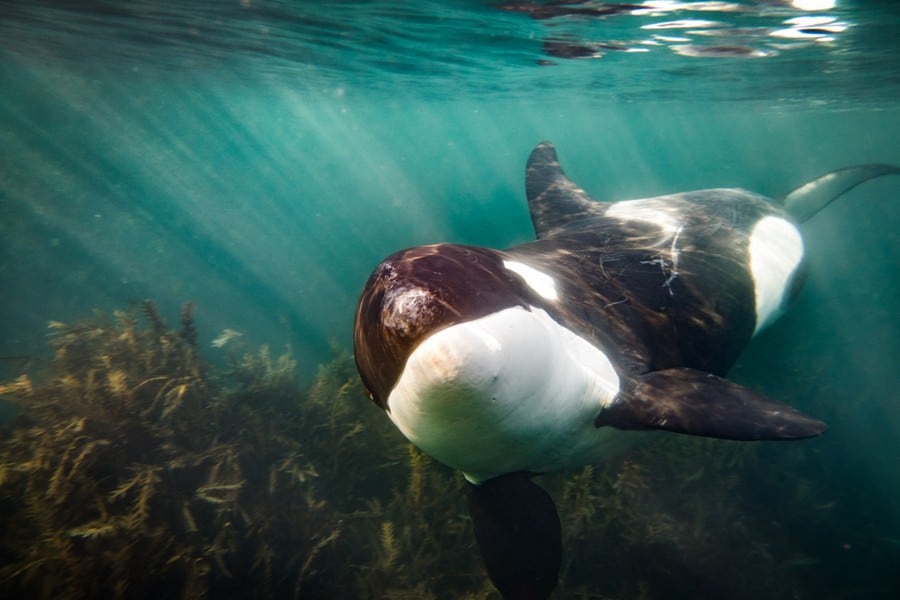
The orca, or killer whale, stands as one of the ocean’s most feared predators. They live in matrilineal family groups known as pods, and are found in every ocean, from the Arctic and Antarctic to tropical seas. Their diet is diverse, ranging from fish and seals to larger whales. Orcas use complex vocalizations for communication and coordination during hunts, which, combined with their speed and power, make them unmatched in the marine world. Orcas have no natural predators, positioning them at the top of the marine food chain.




















































